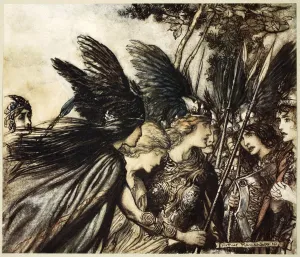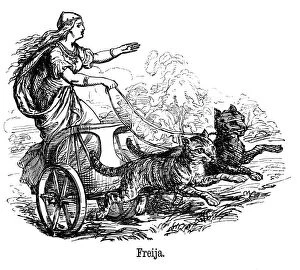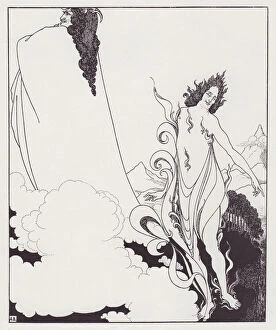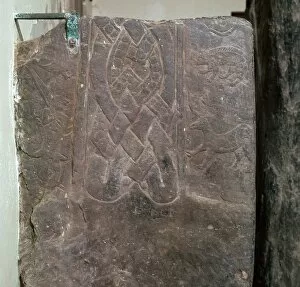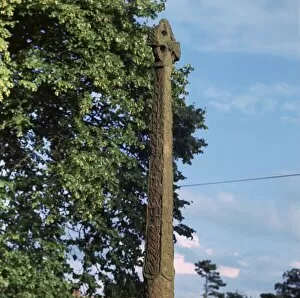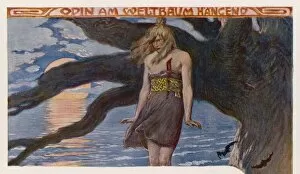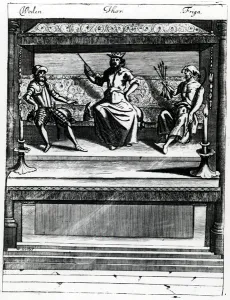Wodan Collection
"Wodan: The Allfather and His Mythical Tales" Step into the realm of Norse mythology as we delve into the captivating world of Wodan, also known as Odin
All Professionally Made to Order for Quick Shipping
"Wodan: The Allfather and His Mythical Tales" Step into the realm of Norse mythology as we delve into the captivating world of Wodan, also known as Odin. This legendary deity is often depicted with his faithful companions, the fierce Hounds of Odin, by his side. One intriguing tale tells of Odin's quest for knowledge and wisdom. He drinks from Mimir's well, sacrificing an eye to gain unparalleled insight into the universe. Another enchanting story revolves around Odin's encounter with Gunnlod, a giantess guarding a precious mead that grants poetic inspiration. Through cunning and charm, he manages to win her heart and obtain this coveted elixir. Intriguingly captured in Arthur Rackham's artwork from 1910 is a moment when Wodan flees for the first time only to be relentlessly pursued. This depiction showcases both his vulnerability and resilience. A Viking runestone dating back to the 8th century portrays Sleipnir, Odin's majestic eight-legged horse. Symbolizing swiftness and transcendence between realms, it serves as a testament to Wodan's power. Freya (also known as Frigg), goddess of love in Scandinavian mythology, commands attention while driving her chariot pulled by cats. Her connection with Wodan adds depth to their intertwined stories. Henry Fuseli's masterpiece from 1770/72 takes us on an eerie journey through Odin's underworld domain. It highlights his role as a guide for fallen warriors who seek eternal glory in Valhalla. The Fourth Tableau of Das Rheingold further explores Wagnerian interpretations of Wotans' Wild Hunt—an awe-inspiring procession led by this god-like figure across mythical landscapes. Delving deeper into history reveals depictions such as "The Principal Idols of the Saxons, " showcasing how these deities were worshipped during Britain’s late 16th-early 17th century.




